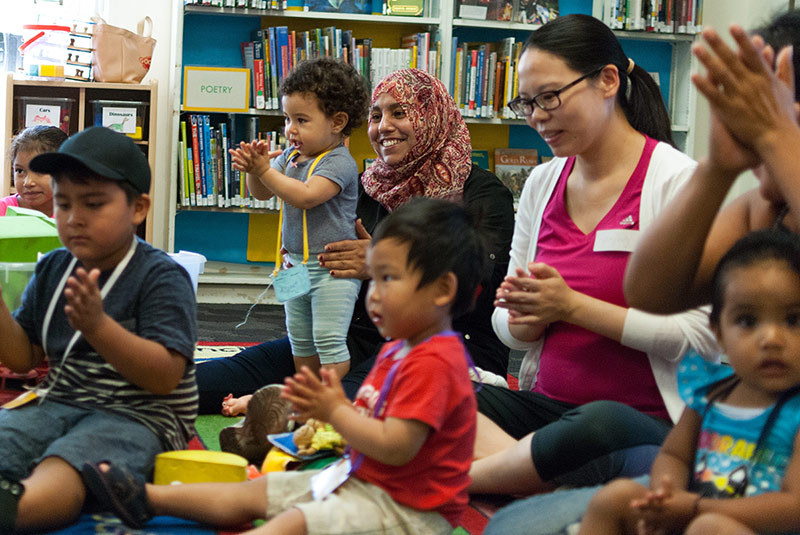Evaluation and Continuous Improvement

Evaluation data can help you better understand your community, strengthen your program design, and engage in continuous learning to lift up promising practices.
Evaluation
Planning your evaluation strategy before implementing your Stay & Play program design is essential. Knowing when and how you will evaluate your service and make any necessary improvements are critical to helping staff understand what is working well, what gaps exist, and what areas need to be strengthened to better meet community needs.
Child Care Provider Surveys
Plan to administer some kind of short, child care provider outcomes survey to gather participant feedback and assess program efficacy. You can use the Stay & Play Outcome Surveys developed as a part of this pilot (available in English and Spanish) or the Caregiver Surveys (available in English, Spanish, Vietnamese and Traditional Chinese) or you can design your own. See Evaluation Administration below.
- Outcome Survey
- Caregiver Survey
Real-Time Data Collection
As an alternative to child care provider surveys, staff can create real-time data collection by putting chart paper around the walls of their Stay & Play space with the different survey questions for child care providers, such as: “What is your favorite part of Stay & Play?”, “What could be improved?” or “What is one thing you’ve learned from Stay & Play?” This way, participants can chart their answers in real time and staff can get immediate feedback to help improve the program.
Evaluation Administration
The Stay & Play Outcomes Survey is intended to be administered at the beginning of the first Stay & Play program session and then again at the end of the last Stay & Play program session. This survey can help staff understand how Stay & Play met the goals outlined in your logic model (see Program Design) while also assessing how satisfied child-care providers were with the program and the extent to which there was any knowledge or behavior change as a result of their participation. Below are some best practices for implementing this survey with child-care provider participants:
- Review the survey introduction clearly with providers so they know that: (1) there are no right or wrong answers; (2) their participation is voluntary; (3) they can skip any question that they are not comfortable answering; and (4) all information collected will be confidential.
- A possible strategy to facilitate survey completion is to read each survey question aloud to the group as a whole, pausing to allow time for each provider to select a response.
- Enter the survey data into a centralized tracking log. This excel spreadsheet can be used to manually enter survey data, keeping the information clean and organized. It also supports analysis of data at the aggregate level to see where there are common trends in participants’ responses.
Continuous Improvement
Providing ongoing opportunities for staff to reflect on their Stay & Play services while also identifying areas for improvement is important to ensuring long-term sustainability and program efficacy. The learning questions developed as part of your logic model help guide these continuous-improvement activities. Examples of continuous-improvement strategies include:
Staff reflection
Make time for staff to reflect and debrief after each Stay & Play program session, or periodically. Dedicating 30 minutes to reflect and document what worked well and what could be improved is one way for staff to intentionally adapt services in real time. This sample reflection form includes questions to help guide staff reflection and documentation. See this video for an explanation of how one pilot library used staff reflection in their continuous improvement strategy.
Learn from others
Identify opportunities to learn from other libraries implementing Stay & Play. This can be done through virtual or in-person meetings that create a safe space to share strategies, ask questions, and discuss challenges with other libraries. Fostering connections and strengthening relationships across libraries also helps facilitate a network of Stay & Play community resources and partners.
Review and next steps
Once your Stay & Play program series has concluded, take time again for final staff reflections, as well as a review of the caregiver pre- and post- outcomes surveys. This final review can help you determine whether Stay & Play should be delivered periodically or become an ongoing library service and what refinements need to be undertaken going forward.
